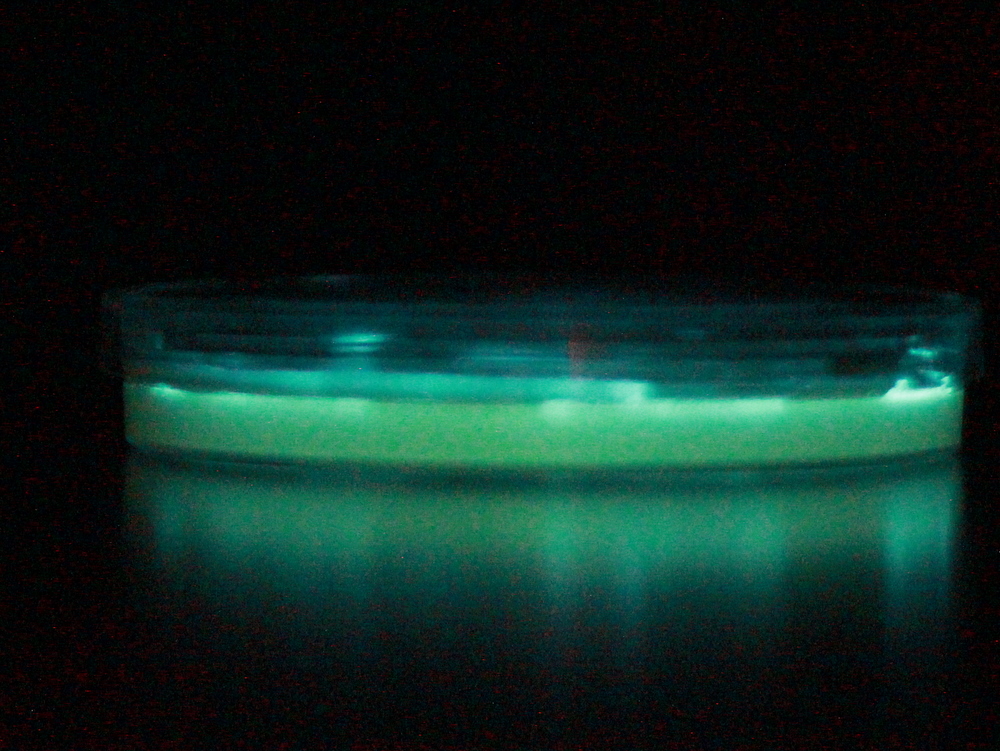Team:Cambridge/Human Practices
From 2010.igem.org

Human practises encompasses the social ethical and legal considerations of our work. We imagined how our particular project might impact on peoples lives as well as thinking about the wider issues of the way we practise our science and share our findings.
Futures
We spent one day early in the project imagining how engineered artificial bioluminescence might be used in the future. This workshop, led by [http://www.daisyginsberg.com/ Daisy Ginsberg] from the Royal College of Arts, made us think about where research into bioluminescence might one day bring us. How would omnipresent bioluminescence affect the way we perceive light in our living environment? Will engineered bioluminescence find its way into consumer products or remain in highly specialised applications and novelty items? Bioluminescent light has a broad spectrum and is emitted volumetrically. How can we use these different qualities of light compared to conventional sources for art, design and architecture?
We split the team into three groups, each of which went on to explore their own ideas about the future of bioluminescence:
Applications
Our thoughts on using biological light sources led us to consider the concept of sustainability. Would our lighting be more sustainable and environmentally friendly than conventional devices? and where might it be useful? Bioluminescence is 'cold light' and much more efficient than conventional lighting. Despite this we find it unlikely that bioluminescence would completely replace current lighting and instead considered it's applications in remote off grid areas or complementing existing sources. Our biological systems would require only a chemical fuel source so would not be dependant on the electrical grid. Perhaps this fuel could come from waste products be that human waste or food waste. If a photosynthetic organism such as a suitable alga species was used then additional energy could be harnessed from sunlight. We might imagine a system where a bioreactor in the roof of a house - supplied with leftover foodstuffs - could pipe glowing algae through the rooms of the house during the night and across the roof during the day. We also considered the exciting prospect of bioluminescent trees lighting our roads and produced a 3D model of what this might look like as well as researching the feasibility of such a project.
We also considered the prospect of using our light production in biosensors after a talk from [http://practicalaction.org/blog/author/djg/ David Grimshaw] of Practical Action. Dr. Grimshaw has worked with the issues of contamination of water sources with arsenic in Bangladesh and mercury in Nepal. He informed us that local people wished for a portable device that was easy to use such that testing of wells could be performed by members of the community and a quantitative digital readout would be preferable. Light production as an output of a biological circuit could be detected by a sensor in an electrical system to give a digital readout. Our biobricks could bridge the gap between biological and electrical circuits. Further investigation into the practicalities of this led to the development of the E.glometer
Knowledge Recycling
Sustainability considerations in end design also led us to consider the sustainability of the way we conduct our research. The theme of recycling echoed strongly throughout or project due to the desire to recycle luciferin substrate in project firefly and more generally with considerations of minimising the environmental impact of our work. Recycling of physical materials is vital for sustainability but do we treat our intellectual property in the same way? Do we give the ideas we have the maximum chance of being taken forward and used to promote further thought rather than reaching intellectual dead ends?
 "
"
